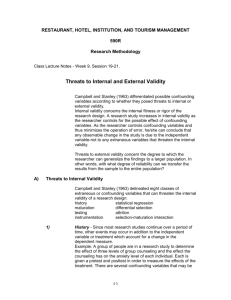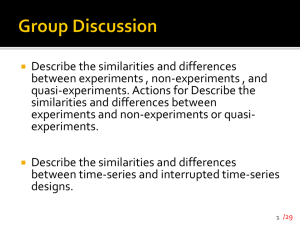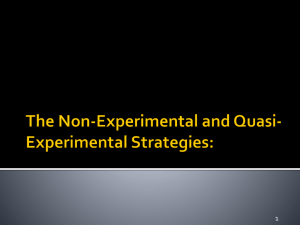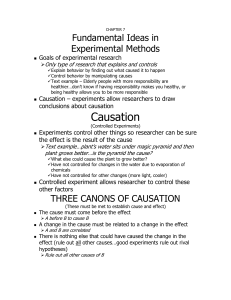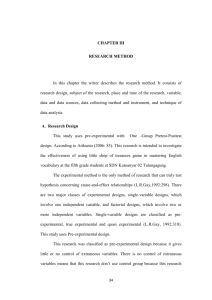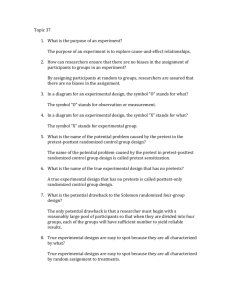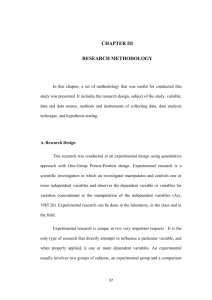703threatstovalidity
advertisement
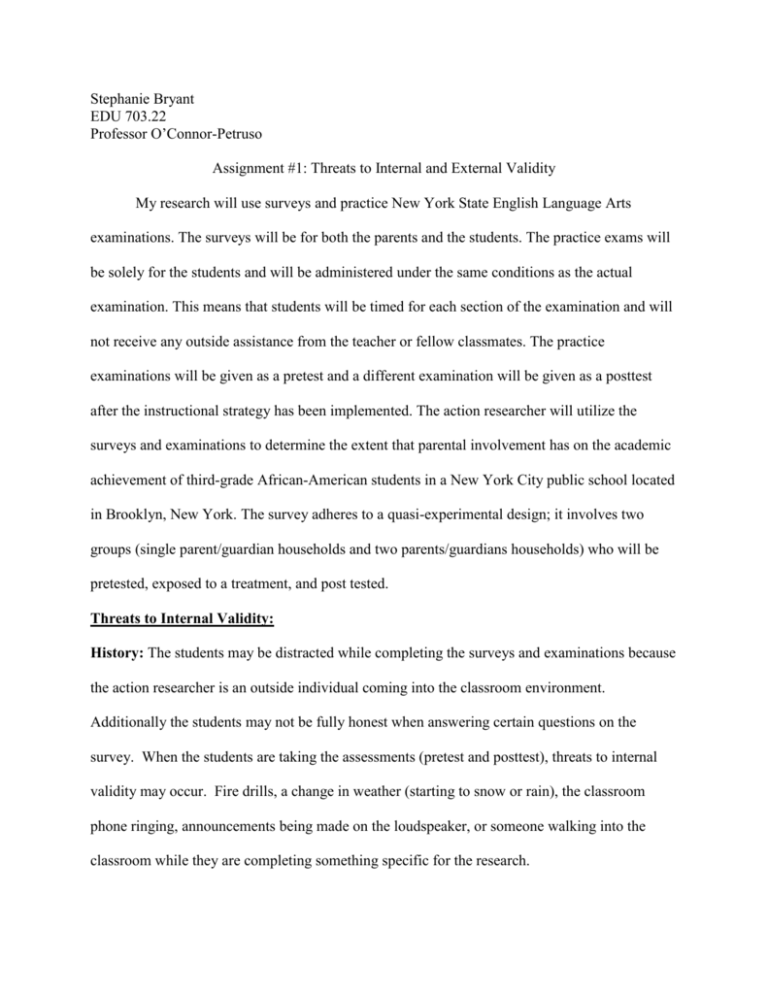
Stephanie Bryant EDU 703.22 Professor O’Connor-Petruso Assignment #1: Threats to Internal and External Validity My research will use surveys and practice New York State English Language Arts examinations. The surveys will be for both the parents and the students. The practice exams will be solely for the students and will be administered under the same conditions as the actual examination. This means that students will be timed for each section of the examination and will not receive any outside assistance from the teacher or fellow classmates. The practice examinations will be given as a pretest and a different examination will be given as a posttest after the instructional strategy has been implemented. The action researcher will utilize the surveys and examinations to determine the extent that parental involvement has on the academic achievement of third-grade African-American students in a New York City public school located in Brooklyn, New York. The survey adheres to a quasi-experimental design; it involves two groups (single parent/guardian households and two parents/guardians households) who will be pretested, exposed to a treatment, and post tested. Threats to Internal Validity: History: The students may be distracted while completing the surveys and examinations because the action researcher is an outside individual coming into the classroom environment. Additionally the students may not be fully honest when answering certain questions on the survey. When the students are taking the assessments (pretest and posttest), threats to internal validity may occur. Fire drills, a change in weather (starting to snow or rain), the classroom phone ringing, announcements being made on the loudspeaker, or someone walking into the classroom while they are completing something specific for the research. Maturation Interaction: This threat is not applicable to this particular study but, some action research studies are longitudinal and this can cause students to become bored with the instruments being utilized during the study. As a result, students may hurry the assessment and not pay attention to what is being asked. Testing/Pretest Sensitization: Since students will be given a pretest, this can cause them to become familiar with the type of questions on the practice New York State English Language Arts examination and aid them in scoring higher on the post test. Instrumentation: Some parents may refuse to fill out the surveys because they feel that it may be too personal. This will affect the number of data which the action researcher is attempting to collect. Morality: Some students may move and they will no longer be able to take part in the research during the six week period. In addition, a new student may be added to the class after the strategy has already been implemented. Statistical Regression: Since the action researcher is using a small population of students (classroom of 22 students), this threat is not applicable. Differential Selection of Subjects: The participants were not chosen at random; they represent a sample of inner city third- grade students and their parents in Brooklyn, New York. Selection-Maturation Interaction: Since the participants are the same age group and from the same geographic location, this threat is not applicable. Threats to External Validity: Ecological Validity: The study is meant for African-American students from inner-city schools and therefore can not be applied to suburban or rural areas. Generalizable Conditions: The study can indeed be replicated with the same target population of third-grade African-American students from single parent/ guardian households. Pretest Treatment: Since students will be given a pretest, this can cause them to become familiar with the type of questions on the practice New York State English Language Arts examination and aid them in scoring higher on the posttest. Selection Treatment Interaction: The participants were not chosen at random. They represent a set sample. Specificity of Variables: The variables are specific in the age and ethnicity of the students involved in the study. Multiple Treatments: Participants will be given one treatment over a six-week period so, this threat is not applicable. Treatment Diffusion: Students or parents may talk amongst themselves about the contents of assessments and surveys. Experimenter Effects: The action researcher should not allow their personal bias or personal feelings towards the students and parents affect the outcome of the research. Reactive Agreements/Participants Effects: The attitudes of the participants may change over time. Students may be having a rough day and not perform as they usually would on the examinations. In addition effects such as the Hawthorne effect or the Novelty Effect might come into play because the action-researcher is an outsider who participants are not familiar with and they may feel the need to impress the action researcher. Works Cited O’Connor-Petruso, Sharon. A. (2010). Descriptive Statistics & Threats to Internal and External Validity. Retrieved February 5, 2010, from http://bbhosted.cuny.edu/webapps/portal/frameset.jsp?tab_id=_2_1&url=%2fwebapps %2fblackboard%2fexecute%2flauncher%3ftype%3dCourse%26id%3d_236952_1%26 url%3d.
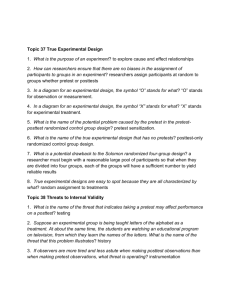
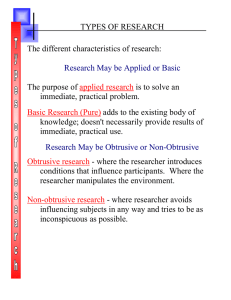

![alissa_pp[1][1][1]. - ActionResearchProjects](http://s3.studylib.net/store/data/009608408_1-13dc6b9e16a090570cf965ea1922f85e-300x300.png)
